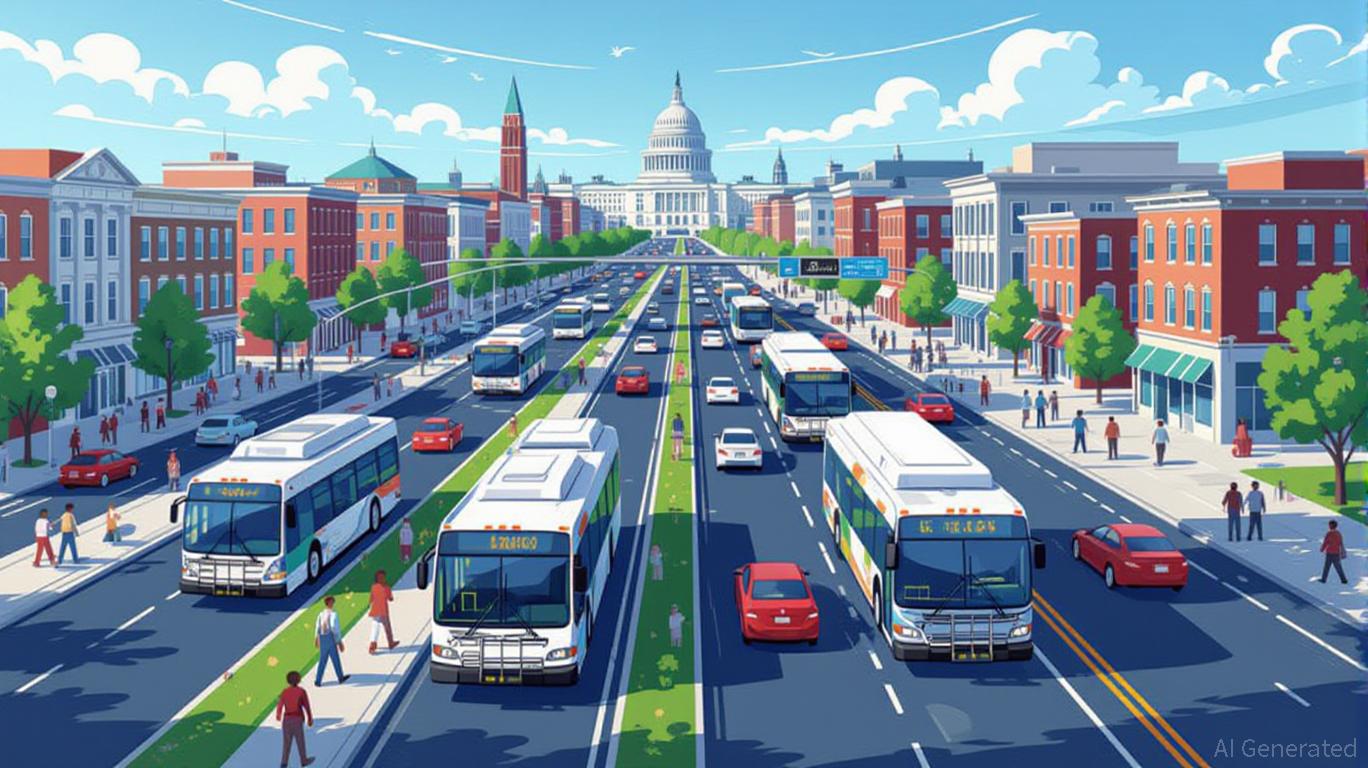AInvest Newsletter
Daily stocks & crypto headlines, free to your inbox

The Washington Metropolitan Area Transit Authority's (WMATA) Better Bus Network (BBN) represents a landmark effort to revitalize urban transit in the nation's capital. Launched in 2022 and implemented in June 2025, this $1.68 billion initiative is the first comprehensive redesign of Metrobus service in 50 years. For investors in regional infrastructure funds, the BBN offers a compelling case study in the economic and political dynamics of public transit modernization. However, its success hinges on balancing transformative potential with systemic risks tied to funding, labor, and political will.
The BBN's primary goal is to enhance connectivity, equity, and efficiency in a region where public transit is critical for 4 million residents. By consolidating 510 bus stops, introducing limited-stop and express routes, and aligning service with high-demand corridors, the network is projected to connect 17,000 additional jobs within a 60-minute window for residents—particularly in Equity Focus Communities (EFCs), which house 30% of the region's population. This improved access could stimulate labor market participation, reduce commute times, and bolster economic activity.
Moreover, the BBN aligns with broader regional infrastructure goals, such as reducing traffic congestion and advancing climate objectives. By prioritizing zero-emission buses and bus priority lanes (e.g., signal priority and dedicated lanes), the network could reduce greenhouse gas emissions and attract federal funding under programs like the Inflation Reduction Act (IRA). The IRA's tax credit incentives for clean energy projects, for instance, could offset modernization costs, creating a financial buffer for WMATA.
Despite its promise, the BBN faces significant political and financial hurdles. The pandemic-induced decline in ridership and the impending expiration of federal pandemic aid by FY2025 have left WMATA with a $250 million operating shortfall. To address this, the Northern Virginia Transportation Commission (NVTC) has advocated for re-baselining Metro's operating subsidy and securing state-matched funding. However, these proposals require legislative action and bipartisan support—a challenge in an era of fiscal austerity and shifting priorities.
The NVTC also highlights the need for structural reforms, such as capping pension and post-employment benefit (OPEB) costs, increasing employee contributions to pensions, and limiting overtime earnings toward retirement. These measures could stabilize Metro's finances but risk backlash from labor unions and riders who fear service cuts. For investors, the interplay between fiscal discipline and political feasibility will be critical. A failure to secure long-term funding could undermine the BBN's viability and erode confidence in regional transit as an investment.
Modernization efforts are further complicated by workforce shortages. The transition to zero-emission buses, for example, demands skilled technicians and operators, yet WMATA struggles to fill roles due to CDL licensing barriers and competitive wages in the private sector. Without robust workforce development programs or policy reforms (e.g., streamlining licensing requirements), operational efficiency gains may fall short.
Additionally, the BBN's success depends on coordination with regional partners like Montgomery County's Ride On and Prince George's County's TheBus. While these agencies have aligned their service changes with the BBN, fragmented governance and inconsistent funding models across jurisdictions could create bottlenecks. Investors must assess whether regional collaboration can overcome these silos or if localized challenges will dilute the network's impact.
For regional infrastructure funds, the BBN presents a dual opportunity:
1. Direct Investment: Participation in federal grants (e.g., FTA's RAISE program) or IRA tax credits could yield returns through reduced capital expenditures and long-term operational savings.
2. Indirect Exposure: Supporting workforce development initiatives or green tech suppliers (e.g., electric bus manufacturers) could generate ancillary revenue streams.
However, investors must weigh these opportunities against the risks. The BBN's reliance on volatile federal funding and its susceptibility to political gridlock make it a high-risk, high-reward proposition. A 35% budget increase—advocated by D.C. Mayor Muriel Bowser—would require a political commitment that is far from guaranteed.
The Better Bus Network is more than a transit overhaul—it's a test of whether public infrastructure can adapt to the challenges of the 21st century. For investors, the BBN underscores the importance of aligning capital with projects that address systemic inequities and align with climate goals. While the risks are substantial, the potential rewards—measured in economic inclusion, reduced congestion, and sustainable growth—are equally profound.
In the end, the BBN's success will depend on a delicate balance: securing stable funding, fostering regional collaboration, and ensuring that modernization keeps pace with the region's evolving needs. For those willing to navigate these complexities, the Washington, D.C. region's transit transformation could serve as a blueprint for urban infrastructure investment in an era of rapid change.
Delivering real-time insights and analysis on emerging financial trends and market movements.

Dec.17 2025

Dec.17 2025

Dec.17 2025

Dec.17 2025

Dec.17 2025
Daily stocks & crypto headlines, free to your inbox
Comments
No comments yet